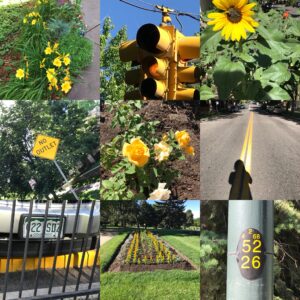
Education Creativity Conundrum: The Tipping Point
“We’ve come to a point in our history in which continuing to do what we’ve always done is no longer an option. We must do better. It begins, as it always does with each of us taking a stand. Imagine if . . . “
Kate Robinson
“Ready or not. Here I come!” The pandemic disruption for education arrived riding on a whirlwind of global chaos. Who could imagine, in this day and age, a disruptor of this magnitude? Ramifications were immediate, some profound and others irritatingly annoying. Within a short period of time, all educators realized how impacting and long-lasting this “ride” was going to be.
At the peak of the crisis, UNESCO data showed over 1.6 billion learners in more than 190 countries out of school. Over 100 million teachers and school personnel were impacted by the sudden closures of learning institutions. The structured settings for learning had been turned upside down. Bringing traditional teaching and learning to a screeching halt. We can only imagine the personal turmoil (for all educators) ensuing since the beginnings of the pandemic.
Call for Change
Disruption, on this level, over the last two years, was on a cataclysmic level. If there was ever a time to rethink schools, the time is now. So with that in mind, let’s take a moment and reflect on the future of education. Could this be the Tipping Point to instigate radical changes in public education? A new era? One that leads to innovative products and services. Quite possibly. For quite some time educators and world leaders have been discussing the need to rethink how we educate and prepare future generations. Two recent publications offer some compelling research and “food for thought.”
The late Sir Ken Robinson solidified the need for creativity in education with his creativity crisis 2006 TedTalk Do Schools Kill Creativity? Now viewed by over seventy two million. This month, March 2022, his daughter, Kate, posthumously released a compendium of his vision for education. Imagine If . . . Creating a Future for us All. In this text, Sir Ken identified 8 Core Competencies that should be “interwoven from the beginning of a student’s education journey and nurtured throughout.” Here are some of his Creativity Core Competency beliefs.
- As the challenges facing young people proliferate, it is essential to help them develop their unique creative capacities.
- Creativity is possible in all areas of human life. It can be cultivated and refined, which involves and increasing mastery of skills, knowledge, and ideas.
Zhao and McDiarmid’s 2022 release, Learning for Uncertainty, provides an intense compilation of present day driving forces behind needed changes in education.
We can imagine a personalized curriculum built on each student’s strengths and designed to support and guide the development of the student’s interests and talents. This could be in addition to the mandatory curriculum, or some of the required curriculum could be part of the personalized learning experience . . . the big message is that schooling can no longer continue as it has been.
McDiarmid and Zhao
Transformations
This pandemic crisis, for the most part, transformed the role of the teacher into the role of the student. Teachers had expertise in their craft, but now found themselves spending a great deal of time intensely wondering about how to persevere in a virtual learning environment. Facing challenges on every level to learn “how to” do it differently. Teachers were forced into adopting new instructional technology and accompanying pedagogies. Students, even though they mostly knew the technology, had to adapt to unfamiliar ways of interacting and learning in a virtual environment. In other words – a challenging mess. A conundrum.
Conundrum – a confusing or difficult problem. The problem is often difficult to analyze or resolve.
This is exactly where it began for all teachers and students. Together – facing the conundrum of the pandemic. Teachers did what they do best. They started problem solving. As life-long learners, they turned to resources and colleagues to collaboratively figure out a different way of navigating daily life as an educator. Approaching each day with the “heart of a teacher” – uppermost in their minds the well-being of their students.
Promising Possibilities
There are some very positive take-aways from this upending experience. It “naturally” forced all educators into further exploring some of the more promising practices. One’s that support a more student-centered learning experience.
- Flipped, hybrid, blended classrooms. Naturally creating a self-paced learning environment for students.
- Differentiation and individual pacing. Time for remediation, acceleration, and enrichment.
- Numerous recorded teaching sessions. Students can REWIND and REPEAT and PAUSE! A great space for remediation and acceleration.
The pandemic left educators with a bevy of new resources created out of the chaos of instant virtual classrooms. At the top of this list is all the teacher-created recorded lessons. The next step is figuring out the “how to” of moving back into the classroom and finding purposeful ways to use “all the lessons learned” without further frustration and exhaustion. Fortunately, there are educational leaders already taking up this charge. Innovating education. Here are two impacting resources created in response to the growing need for virtual learning environments:
- Kareem Farah’s Modern Classroom Project – cohorts of educators world-wide implementing blended, self-paced, mastery-based instruction. This includes workshops to help educators build lessons for their classrooms.
- Keep Indiana Learning – supports educators everywhere with instructional resources, professional development opportunities, and other best practices. This includes on-demand workshops for educators, as well as live coaching.
New Beginnings
The conundrums of life are ever present. For our students to thrive in this new world, they will need the skills of creativity: critical thinking, creative thinking, communication, and collaboration. The very ones that served all educators well over the past two years of the pandemic. The very ones that enhance student involvement in future-ready programs and prepare them for the unknown challenging futures they will face. Perhaps this pandemic experience will result in a renewed belief and confidence in adopting innovative policies and practices.
“Usually, the main problem with life conundrums is that we don’t bring to them enough imagination.”
Thomas Moore
Imagine if . . . one day, we can look back on these past two years as the Tipping Point. One that rocketed education into a new era. A place where both teachers and students find personal and professional happiness and success. Here’s your chance. Now’s the time. Take a stand.
Live, learn, and lead creatively!
Rick & Patti
For Your Classroom
- Ken Robinson, Imagine If . . . Creating a Future for us All
- McDiarmid and Zhao, Learning for Uncertainty
- The Modern Classroom Project
- Keep Indiana Learning
Let’s Reflect and Remember . . .
- The structured settings for learning had been turned upside down. Bringing traditional teaching and learning to a screeching halt.
- Teachers did what they do best. They started problem solving. As life-long learners, they turned to resources and colleagues to collaboratively figure out a different way of navigating daily life as an educator.
- For quite some time educators and world leaders have been discussing the need to rethink how we educate and prepare future generations.
- What if educators join together to look at the disruption caused by the pandemic as the opportunity to do school very differently – the way many of us have been dreaming of for some time?
EDUCATION CREATIVITY CONUNDRUM
Conundrums . . . conjuring meanings and feelings . . .
fiercely smashing thoughts.
eeking out playful and painful intensities . . .
bringing forth surprise and query.
the essence of the creative mind.
The Story Behind the Creativity Conundrums



